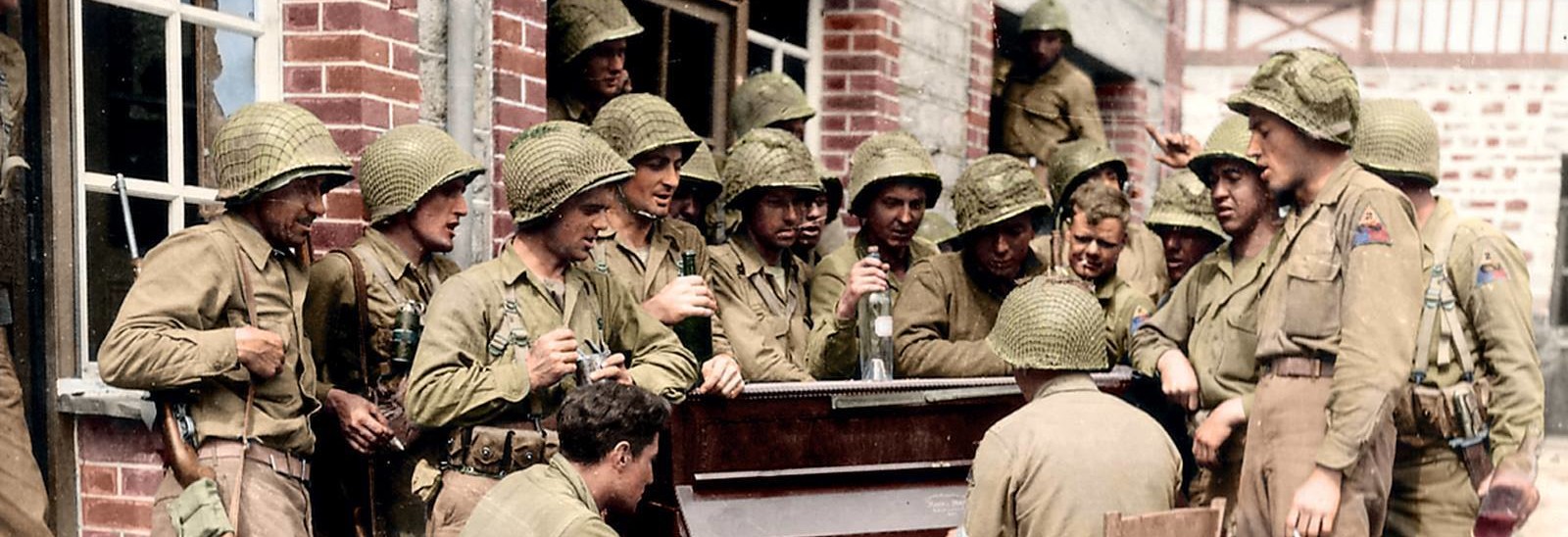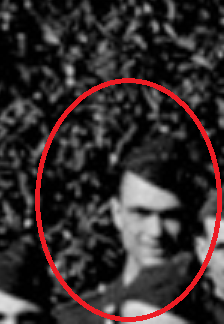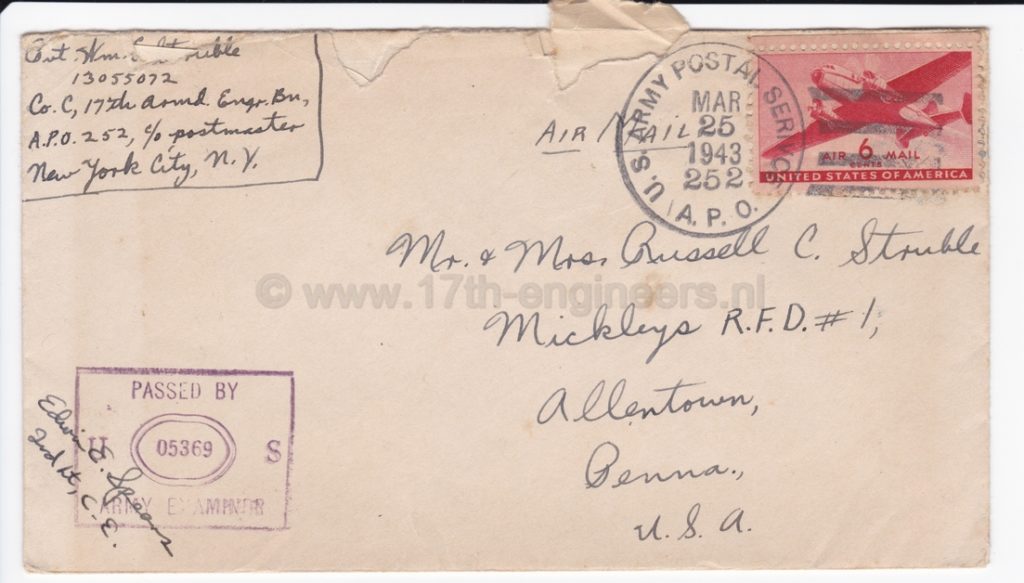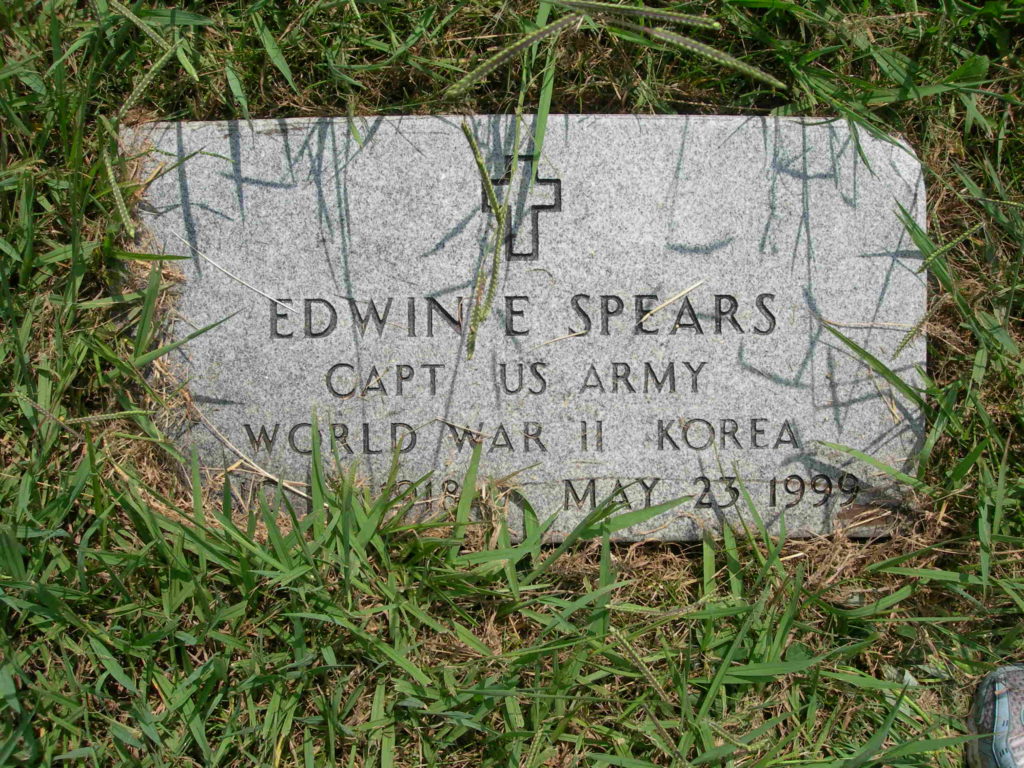The story of Lieutenant Edwin E Spears
Company C, 17th Armored Engineer Battalion
Army Serial Number 34075001
Born: 1918
Deceased: 23 May 1999 (aged 80–81)
United States World War II Army Enlistment Record
| Name | Edwin E Spears | |||
| Name (Original) | SPEARS EDWIN E | |||
| Event Type | Military Service | |||
| Event Date | 15 May 1941 | |||
| Event Place | Jacksonville Aaf, Florida, United States | |||
| Race | White | |||
| Citizenship Status | citizen | |||
| Birth Year | 1918 | |||
| Birthplace | NORTH CAROLINA | |||
| Education Level | 4 years of college | |||
| Civilian Occupation | Authors, editors, and reporters | |||
| Marital Status | Single, without dependents | |||
| Military Rank | Private | |||
| Army Branch | Branch Immaterial – Warrant Officers, USA | |||
| Army Component |
Selectees (Enlisted Men)
|
|||
Army Examiner
During the war he was the Officer who was also the “army Examiner” of the letters written by his men. He censored the letter if necessary by the army regulations. During this time in het overseas deployment he was the platoon commander of Company C, the 17th Armored Engineer Battalion.
One example can been seen on the letters of Letters PFC William E Struble from the year 1943.
Newspaper article; December 16, 1945
Asheville Citizen-Times (Asheville, Buncombe, North Carolina, United States of America) · 16 Dec 1945
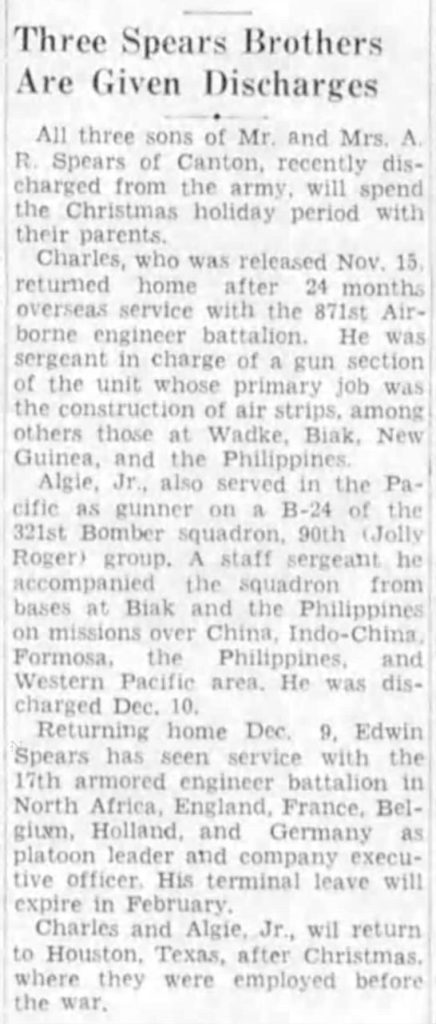
Asheville Citizen-Times (Asheville, Buncombe, North Carolina, United States of America) · 16 Dec 1945
Three Spears Brothers Are Given Discharges All three sons of Mr. and Mrs. A. 11 Spears of Canton, recently dis-charged from the army, will spend the Christmas holiday period with their parents. Charles, who was released Nov, 15. returned home after 24 month:, overseas service with the 871st Air-borne engineer battalion. He was sergeant in charge of a gun section of the unit whose primary job warsi the construction of air strips. among! others those at Wadke, Biak, New Guinea, and the Philippines. Algie, Jr., also served in the Pa-cific as gunner on a B-24 of the 321st Bomber squadron. 90th tinily Rogert group. A staff sergeant he accompanied the squadron from bases at Biak and the Philippines on missions over China. Indo-China. Formosa, the Philippines, anti Western Pacific area. He was dis-charged Dec. 10. Returning home Dec. 9, Edwin. Spears has seen service with the 17th armored engineer battalion in North Africa, England, France, Bel-gium, Holland, and Germany as platoon leader and company execu-tive officer His terminal leave will expire in February. Charles and Aloe. Jr., wil return to Houston, Texas, after Christmas. where they were employed before the war.
(Transcribed: Martijn Brandjes)
Newspaper article; 6 June 1994
Asheville Citizen-Times (Asheville, Buncombe, North Carolina, United States of America) · 6 Jun 1994
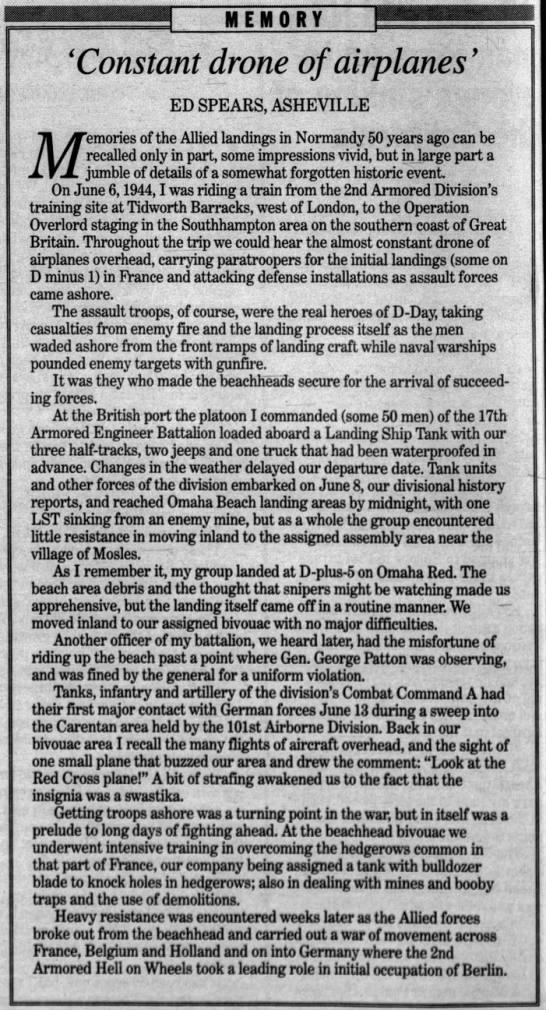
Asheville Citizen-Times (Asheville, Buncombe, North Carolina, United States of America) · 6 Jun 1994 (source: newspapers.com)
`Constant drone of airplanes’
ED SPEARS, ASHEVILLE
Memories of the Allied landings in Normandy 50 years ago can be recalled only in part, some impressions vivid, but in large part a jumble of details of a somewhat forgotten historic event. On June 6, 1944, I was riding a train from the 2nd Armored Division’s training site at Tidworth Barracks, west of London, to the Operation Overlord staging in the Southhampton area on the southern coast of Great Britain. Throughout the trip we could hear the almost constant drone of airplanes overhead, carrying paratroopers for the initial landings (some on D minus 1) in Ft.ance and attacking defense installations as assault forces came ashore. The assault troops, of course, were the real heroes of D-Day, taking casualties from enemy fire and the landing process itself as the men waded ashore from the front ramps of landing craft while naval warships pounded enemy targets with gunfire. It was they who made the beachheads secure for the arrival of succeed-ing forces. At the British port the platoon I commanded (some 50 men) of the 17th Armored Engineer Battalion loaded aboard a Landing Ship Tank with our three half-tracks, two jeeps and one truck that had been waterproofed in advance. Changes in the weather delayed our departure date. Tank units and other forces of the division embarked on June 8, our divisional history reports, and reached Omaha Beach landing areas by midnight, with one LST sinking from an enemy mine, but as a whole the group encountered little resistance in moving inland to the assigned assembly area near the village of Mosles. As I remember it, my group landed at D-plus-5 on Omaha Red. The beach area debris and the thought that snipers might he watching made us apprehensive, but the landing itself came off in a routine manner. We moved inland to our assigned bivouac with no major difficulties. Another officer of my battalion, we heard later, had the misfortune of riding up the beach past a point where Gen. George Patton was observing, and was fined by the general for a uniform violation. Tanks, infantry and artillery of the division’s Combat Command A had their first major contact with German forces June 13 during a sweep into the Carentan area held by the 101st Airborne Division. Back in our bivouac area I recall the many flights of aircraft overhead, and the sight of one small plane that buzzed our area and drew the comment: “Look at the Red Cross plane!” A bit of strafing awakened us to the fact that the insignia was a swastika. Getting troops ashore was a turning point in the war, but in itself was a prelude to long days of fighting ahead. At the beachhead bivouac we underwent intensive training in overcoming the hedgerows common in that part of France. our company being assigned a tank with bulldozer blade to knock holes in hedgerows; also in dealing with mines and booby traps and the use of demolitions. Heavy resistance was encountered weeks later as the Allied forces broke out from the beachhead and carried out a war of movement across France. Belgium and Holland and on into Germany where the 2nd Armored Hell on Wheels took a leading role in initial occupation of Berlin.
(Transcribed: Martijn Brandjes)
Inscription:
EDWIN E SPEARS
CAPT US ARMY
WORLD WAR II KOREA
1918 MAY 23 1999
